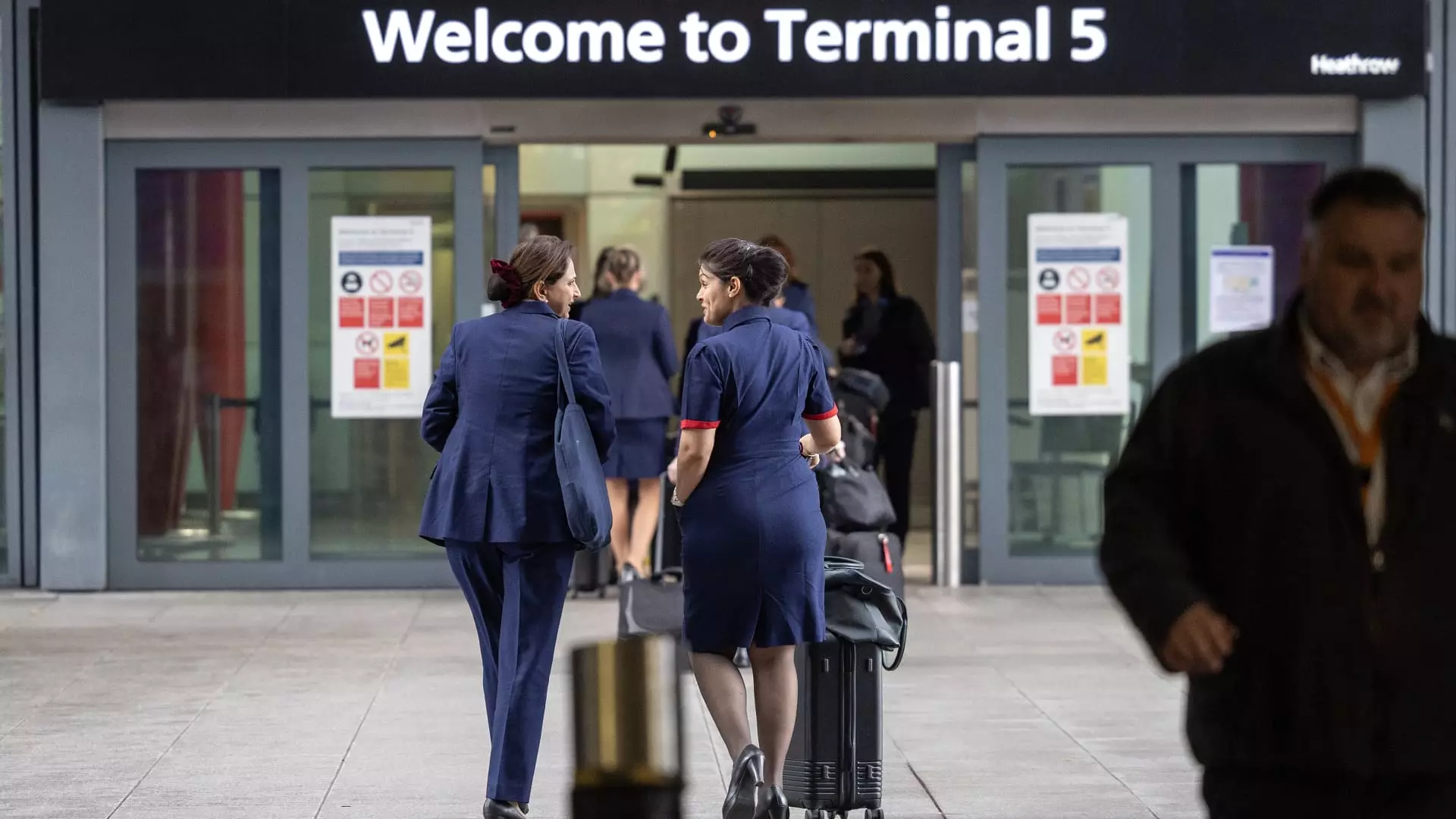On a seemingly ordinary Friday, a significant power outage plunged London’s Heathrow Airport, the busiest in Europe, into turmoil. The incident, precipitated by a fire at a nearby electrical substation, led to a suspension of services that affected thousands of travelers worldwide. More than 800 flights were canceled, stranding passengers and causing widespread frustration. The implications of this incident extend far beyond simple inconvenience; they raise crucial questions about infrastructure vulnerabilities and the resilience of operational protocols in one of the world’s key transport hubs.
As operations resumed on Saturday, the sense of urgency was palpable. Heathrow’s management issued apologies, urging travelers to check directly with airlines regarding their flight status before making their way to the terminal. The disturbance touched every airline operating within the airport, with British Airways—Heathrow’s largest carrier—being particularly hard-hit. This situation forced the airline to cancel more than half of its Friday schedule, only to find that resuming normal operations would be a laborious process.
Infrastructure Vulnerabilities Unveiled
The incident has stirred a wave of reflection regarding the fragility of essential infrastructure, which often operates under the assumption of uninterrupted functionality. The National Grid’s restoration of power was a critical step in resuming airport operations, yet the underlying fears remain. How can such a key infrastructure like Heathrow, which accommodates approximately 1,300 flight movements per day and handled nearly 84 million passengers last year, be so heavily reliant on a singular power source?
Former IAG CEO Willie Walsh voiced this concern, labeling the incident as a “total planning failure” on Heathrow’s part. His criticism should prompt an urgent reassessment of risk management strategies and contingency planning at major airports. The fact that such a catastrophic failure can bring an entire airport to a standstill exemplifies a pressing need for diversification in energy sourcing, alongside robust emergency response protocols.
The Human Impact: Travelers Awaiting Resolutions
For the passengers affected, the loss of their travel plans translated into more than just anger; it disrupted personal obligations—family gatherings, business meetings, or crucial life events—reflecting the emotional weight carried when travel goes awry. British Airways provided assurances of “flexible options” for those booked over the weekend, enabling free rebooking. This gesture, while beneficial, is merely a band-aid solution for a much larger systemic issue affecting consumer trust and expectations.
Travelers found themselves ensnared in a web of uncertainty, waiting for updates on delayed flights, scrambling for alternative arrangements, and grappling with the noise of frantic announcements in the airport terminals. Understanding the human element of aviation disruptions is critical; these are not just statistics or numbers on a flight tracking app, they are individuals whose lives hinge on timely travel.
Questioning Accountability and Future Measures
With the Metropolitan Police now investigating the incident—albeit confirming “no indication of foul play”—the discussion surrounding accountability becomes pertinent. Who ultimately bears the financial burden of such disruptions? Walsh’s commentary points toward a systemic imbalance within aviation economics, where airlines are often left to shoulder the costs of infrastructure failures. This reality calls for a reevaluation of guidelines on financial responsibility during operational breakdowns and the establishment of measures to ensure fair allocation of support among stakeholders.
Additionally, if customer care costs continue to rely heavily on the airlines when issues arise beyond their control, this could lead to increased ticket prices in the long run, burdening everyday travelers. Regulatory bodies must step in and consider policies that equitably distribute these costs while incentivizing airports to invest in resilience.
Looking Ahead: The Path to Robust Operations
As Heathrow navigates the aftermath of this significant disruption, it faces mounting pressure to bolster its operational resilience. Strengthening infrastructure, diversifying power sources, and enhancing customer service response procedures should top the agenda. The events of one chaotic Friday have spotlighted not only the strengths of our existing systems but also their profound limitations—juxtaposing operational efficiency with the complex realities of modern travel.
Now more than ever, the airport must commit to safeguarding its infrastructure and ensuring that travel experiences are not just efficient, but also reliable, paving the way for a resilient future for air travel.


Leave a Reply